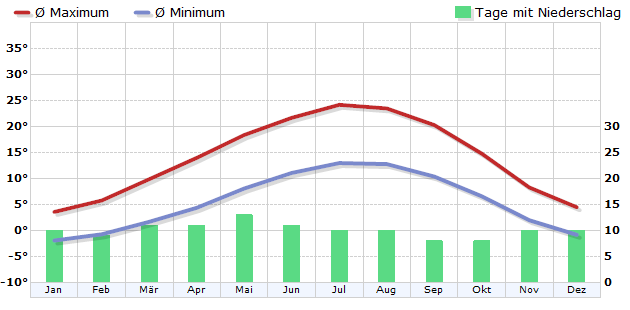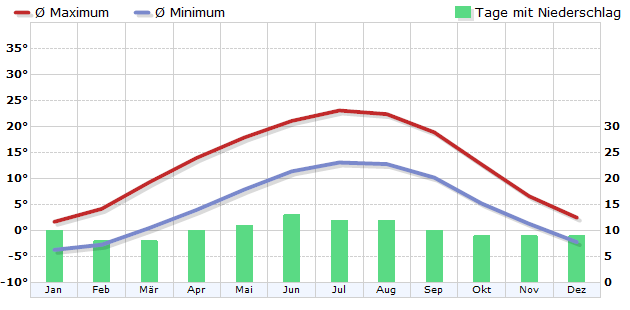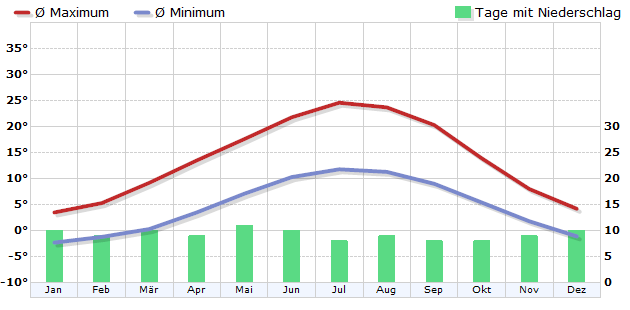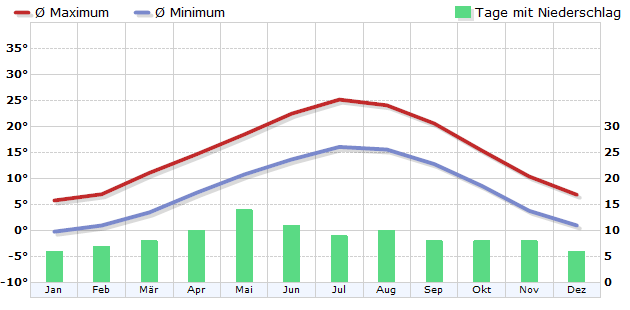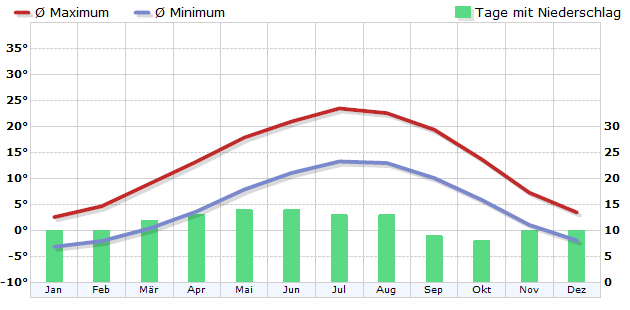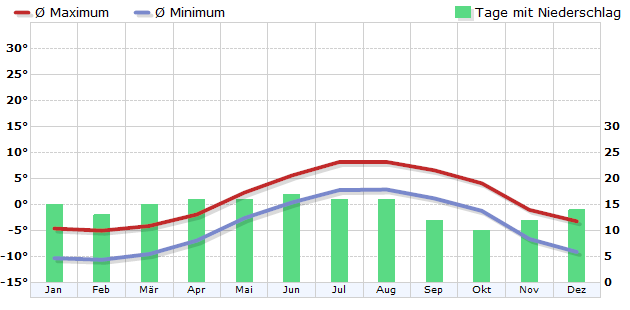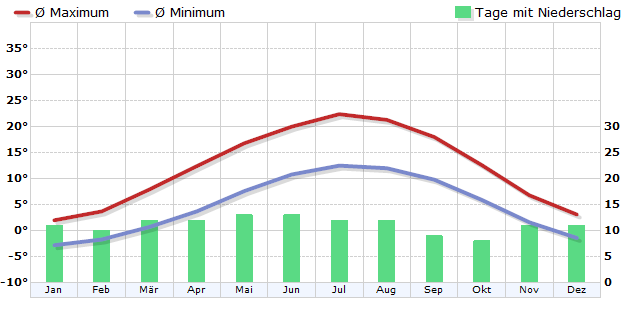Climate Switzerland
Switzerland has an overall temperate climate. The main Alpine ridge separates the rather cool and humid climate in the north from the milder, partly Mediterranean climate in the south. There are still large regional differences. In the inner alpine valleys, one partly finds a climate of one's own. For example, the Valais and the Engadine are known for their comparatively low rainfall. While in the Alps and northern foothills of the Alps up to 2000 mm of precipitation fall per year, in the two regions often shielded from precipitation only 500 to 700 mm fall per year. In the lowlands north of the Alps, annual precipitation is usually between 1000 and 1500 mm. With the exception of the Valais, the largest rainfall occurs during the summer months. The prevailing temperatures are mainly determined by the altitude of each place. In the lowlands, the average temperature in the warmest month of July is between 16 and 19 degrees, in cold January between minus 1 and plus 1 degrees.
Switzerland offers incentives for a holiday in all seasons. The skiing season usually lasts from November to April. In the other months, mountains and valleys invite you to hike and climb. In the summer months you can also spend swimming holidays at the lakes.

